Since Mattia Croci-Torti was promoted to the head coaching position in late 2021 after three years as assistant manager; it's been a natural progression up the Swiss Super League standings for FC Lugano.
After repeating their previous season's league finish by ending 2021/22 in fourth position, they climbed up to third the following year before recording their highest placement since 2001 last term, finishing second to champions Young Boys.
They're halfway through this campaign and looking to do better.
They're at the top of the league in what's shaping up to be an exciting title race this year in Switzerland.
At the winter break, only four points currently split the top six.
With the second half of the season set to commence in a couple of weeks, winter champions Lugano will be looking to go one better this spring as they seek their first Swiss championship since 1949.
They're also flying high in other competitions, having qualified to the last 16 of the UEFA Conference League, their first time in a European knockout stage, and the Swiss Cup quarter-finals.
However, this article will focus exclusively on their league performances.
In this tactical analysis and head coach analysis, we will examine some of the keys to Lugano's success in the Swiss Super League this season, which have brought them to the summit at the halfway stage.
We will also examine some issues that will need to be ironed out if they are to go the distance and win their first league title in seventy-six years.
FC Lugano Tactical Profile
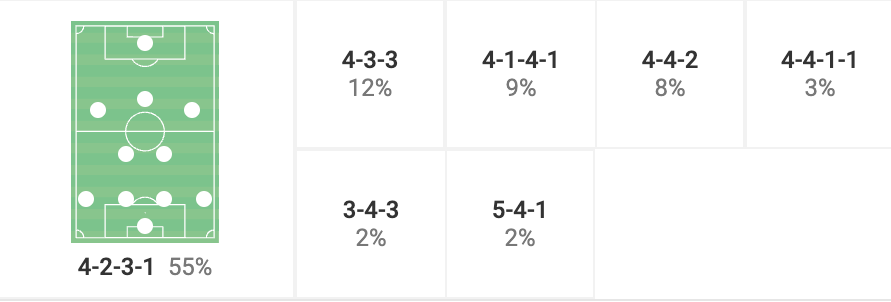
Under Croci-Torti, Lugano set up predominantly in a 4-2-3-1 shape, although they do very rarely mix it up with other approaches that involve playing with a second forward or with three/five at the back.
They are a side that likes to get on the ball and dictate the play, as evidenced by their superior possession, averaging 61% throughout the season in Switzerland.
However, they are not a typical possession-based team.
They are very patient in their approach and wait for openings to appear before carving up the opposition.
They rely a lot on their creative flair wide players, usually former Wolfsburg winger Renato Steffen and ex-Chicago Fire player Ignacio Aliseda, who are played on the flank opposite to their dominant foot so they can come inside and create danger.
At the same time, their full-backs attack the spaces left behind by them on the outside.
They like to move the ball from back to front as quickly as possible on most occasions, particularly referring to their wide players when progressing upfield.
This is where they've found vast success offensively this season.
They also employ a counter-pressing strategy when they lose the ball, and they do so aggressively, with 231 recoveries posted within five seconds of doing so.
This strategy has helped them keep the ball in their possession more than the opposition in every single league encounter this past fall.
Now that we have a picture of their approach to the game, let's take a closer look at some of the strategies they have used in their offensive playbook to achieve success since the start of the campaign.
Runs From Behind Into The Box
As we mentioned earlier, offensively, Lugano likes to move from back to front as quickly as possible and rely on the creativity and ingenuity of their wide players, who come inside on their preferred foot.
Although Steffen and Aliseda, the team's starting wingers, are also its most prolific goal-scorers, their primary roles are to set up others and bring their teammates into play in offensive areas in and around the opposition penalty area.
One way Lugano achieves this is through late runs into the box from their overlapping full-backs or midfielders and early release passes over the top of the defence to pick them out.
Below, we can find some examples of this from a few of their league games this season.
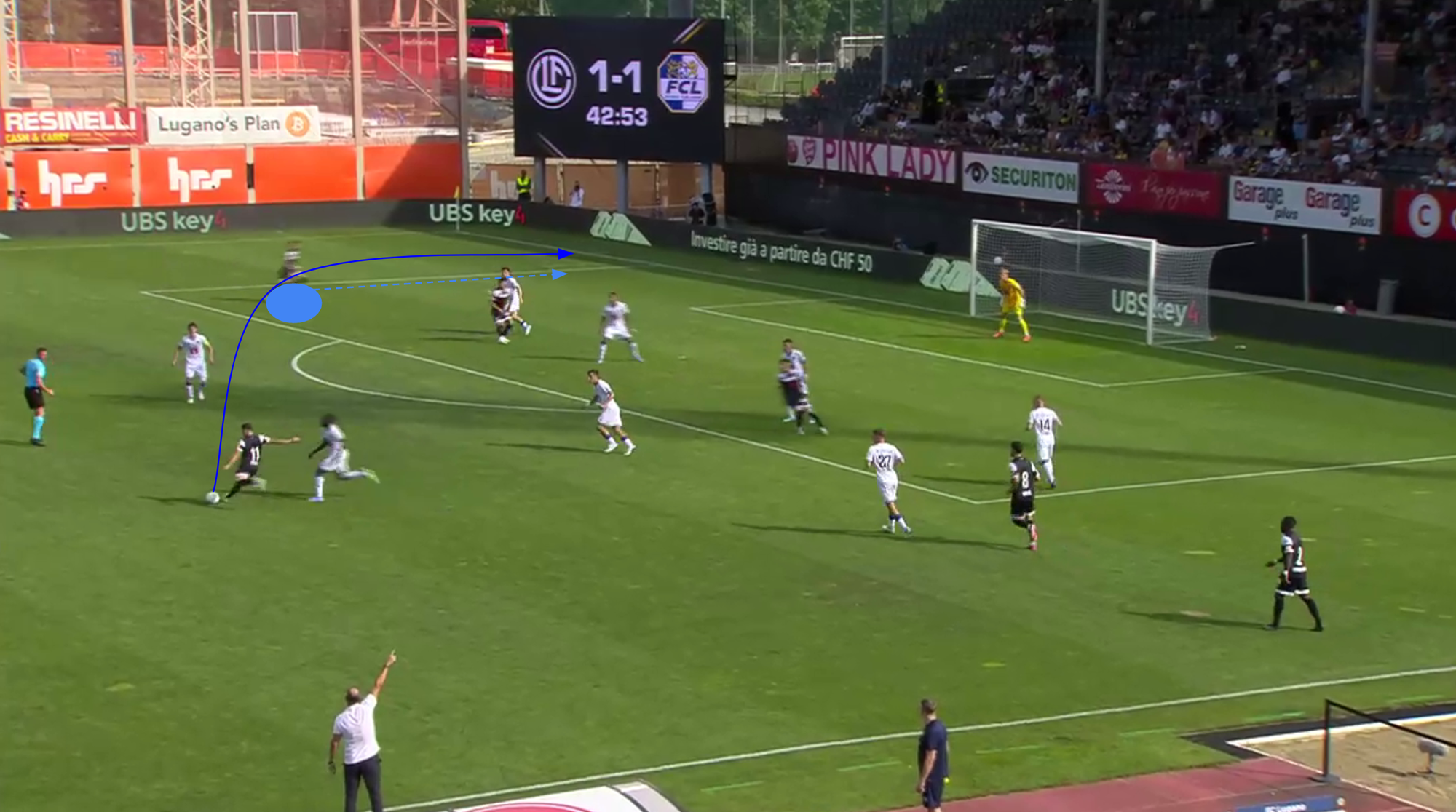
Here, we can see Steffen on the ball in a central position on his favoured left foot, looking to lift the ball into the box over the top of Luzern's defence after spotting the run at the top of the penalty area from their Portuguese left-back, Martim Marques.
With the Luzern right-back tucking in on the left winger, in this case, Hicham Mahou, a small gap appears in the box, which Marques exploits before laying it on a plate for striker Shkelqim Vladi to score after Steffen's inch-perfect initial ball.

Here's another example of a late run into the box from one of Lugano's deeper players, again from the home win against reigning champions Young Boys, albeit in a different situation than the previous one.
The circled player making the run unchecked into the penalty area is Mahmoud Belhadj, one of Lugano's standard double-pivot players, coming from midfield and being picked out early by Aliseda's cut-back and finishing to double their lead.
And to put Croci-Torti's imprint further on the goal, this whole sequence came about just seconds after Lugano recovered possession quickly after losing it before it ended up on the left wing at Aliseda's feet.

Now, we'll see another couple of examples from the win against Zürich, one of their rivals in the first six positions at the top of the league.
First, above, we can see central midfielder Anto Grgić on the ball with time and space to make his next decision, assessing what's in front of him.
On the edge of the box, Steffen spots holes in between Zürich's defence and senses an opportunity to make a run into one of those spaces for a potential ball over the top from Grgić.
Grgić spots Steffen's run as well and picks him out before Steffen finishes for the equaliser.

Remember how we mentioned that Lugano like to move from back to front as quickly and efficiently as possible?
Well, here's a good example of that here, where Ousmane Doumbia, filling in for the suspended Belhadj on this occasion in midfield, deciding to play the ball early over the top with Zürich's defense holding a higher line but with gaps in between and two Lugano forwards beginning to make runs in behind.
In the end, Vladi is the one who gets on the end of it and finishes clinically for 3-1, which effectively proved too much for Zürich to come back from on the day.
FC Lugano Shot Assists Map
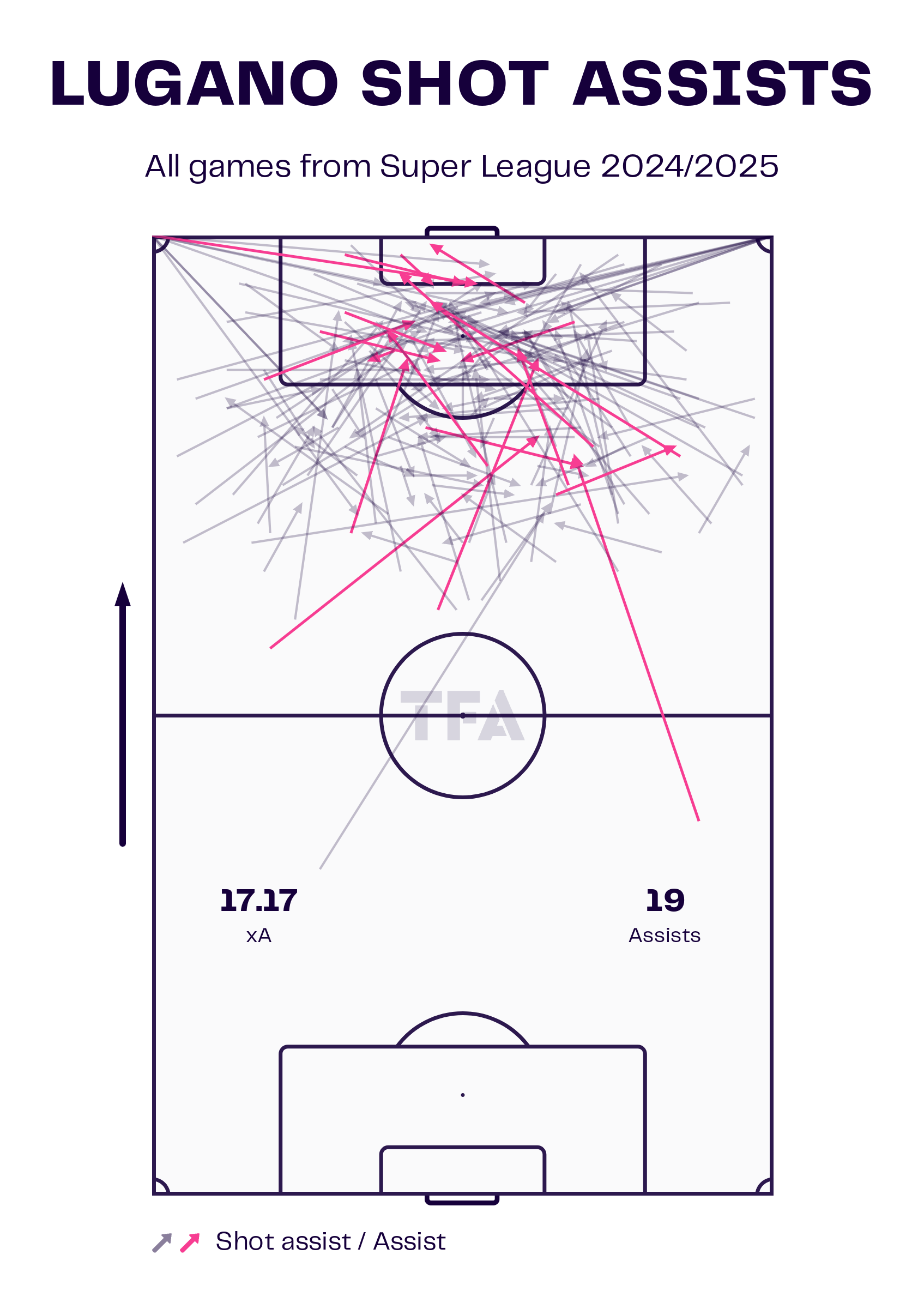
In support of the examples shared above, here is Lugano's shot assist map, which displays their expected assists (xA) and the impressive nineteen assists, as well as the locations of those balls that led to goals and other opportunities to score.
Most of those direct assists, marked in pink, come from outside the opposing penalty area, which is a testament to their tactic of making clever runs in behind and picking them out early with excellent accuracy.
Having scored in this manner on multiple occasions this season, it's clear that this strategy has paid dividends and that Swiss defences are finding it hard to stop them when they do this.
FC Lugano Winger Actions Map
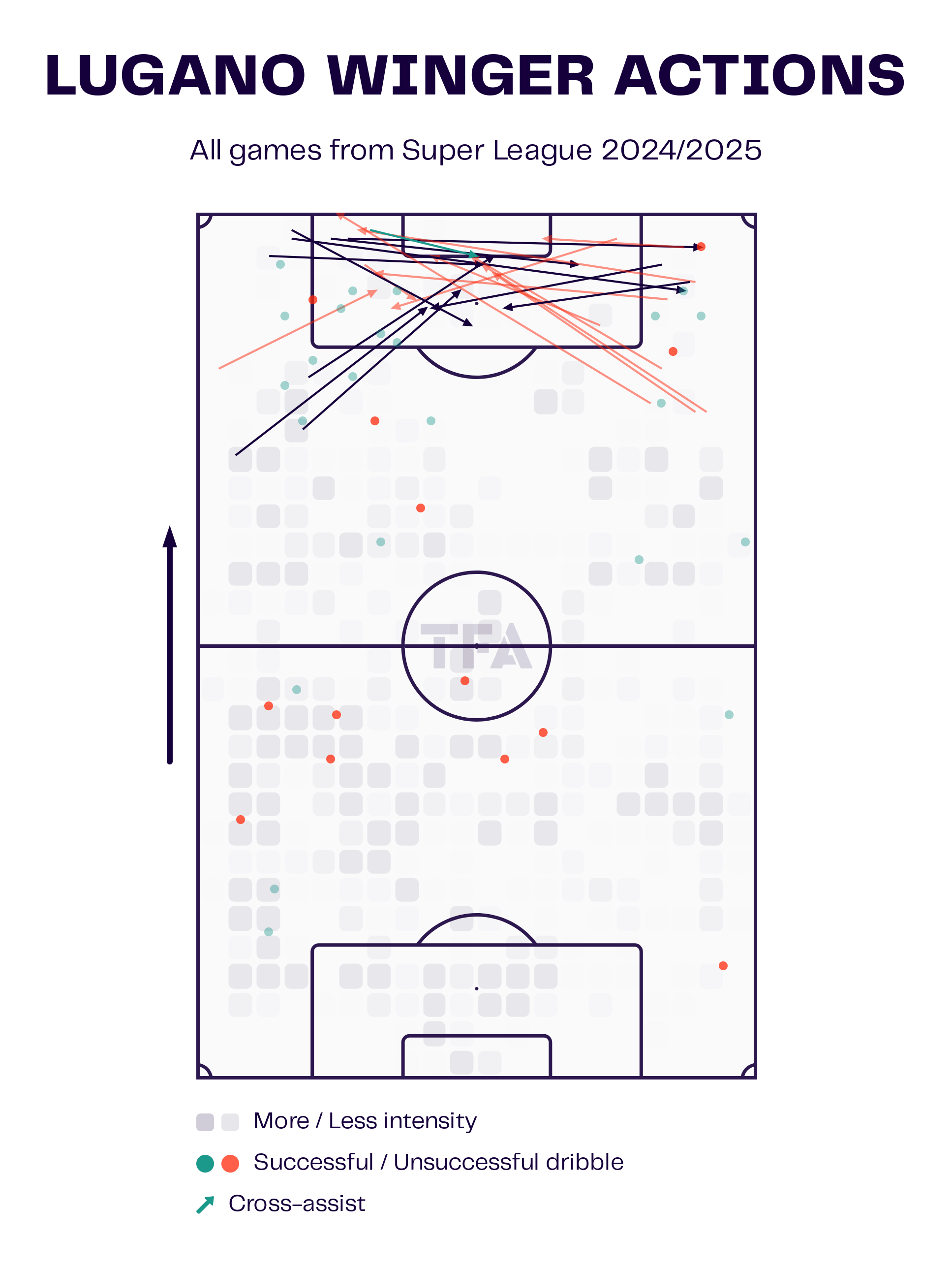
Of course, for these runs to be rewarded properly requires players with the quality to pick them consistently, which is why Lugano will be thankful to have the likes of Steffen and Aliseda in their ranks pulling the strings.
The data viz above highlights their winger actions in the league this term and where their attacking focus lies, as Lugano like to attack through their wide players.
As we can see, there is a higher intensity and dribbling success on their left side, as opposed to the right, where perhaps Steffen's age of 33 is a factor, compared to the Argentine winger on the opposite flank, who should be in the prime years of his career.
Either way, they've managed to create a good balance and synergy between themselves and have been the leaders of this Lugano offence, which is firing on all cylinders in every competition this year.
While things are clicking very well in attack, they will have to address some issues on the other end if they seriously challenge the title.
Struggles Defending Balls In Their Penalty Area
This team is experiencing a couple of defensive issues, mostly related to handling crosses into their box, both in open play and dead ball situations.
Here's one example from open play below, against St. Gallen earlier in the season.
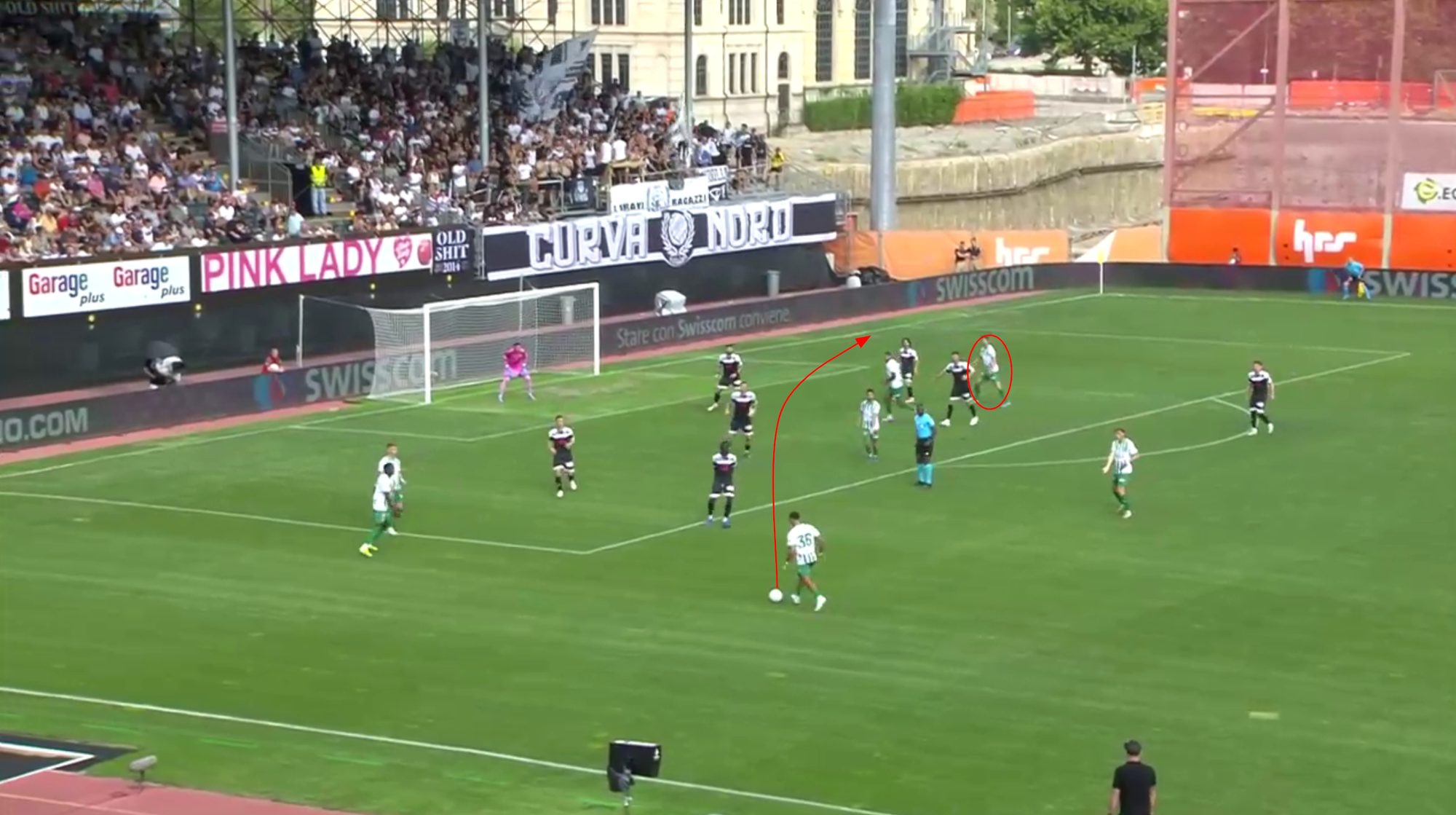
There are six players behind the ball in the box before the cross comes in, but only half as many as St. Gallen players are in the Lugano penalty area.
As the ball is lifted into the box, it goes towards the back post, where Marques fails to stay close enough to the forward (circled above), who then heads it in to give the visitors an away lead.
From a Lugano perspective, it's a very soft goal to allow, and there have been a few of these this season.
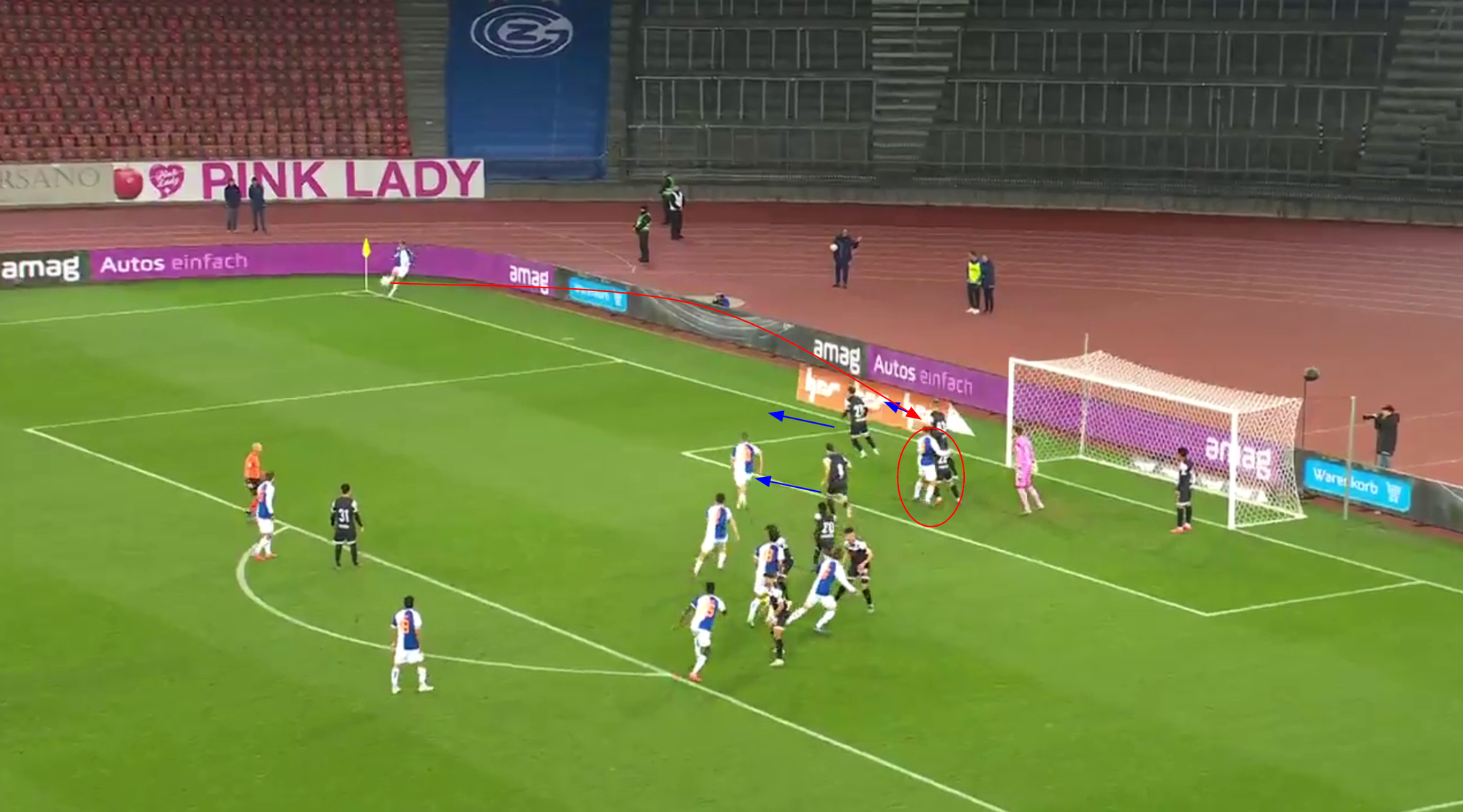
From set plays, it's been a similar story on some occasions.
One above from the trip to Grasshoppers where there is a single opposing player inside their six-yard box, while Lugano have three defenders and their goalkeeper there at the near post to defend him.
But as the corner is taken, two of the players at the near post begin to move away, which removes them from the equation.
This allows the Grasshoppers to have a 1v1 situation, which results in a goal.
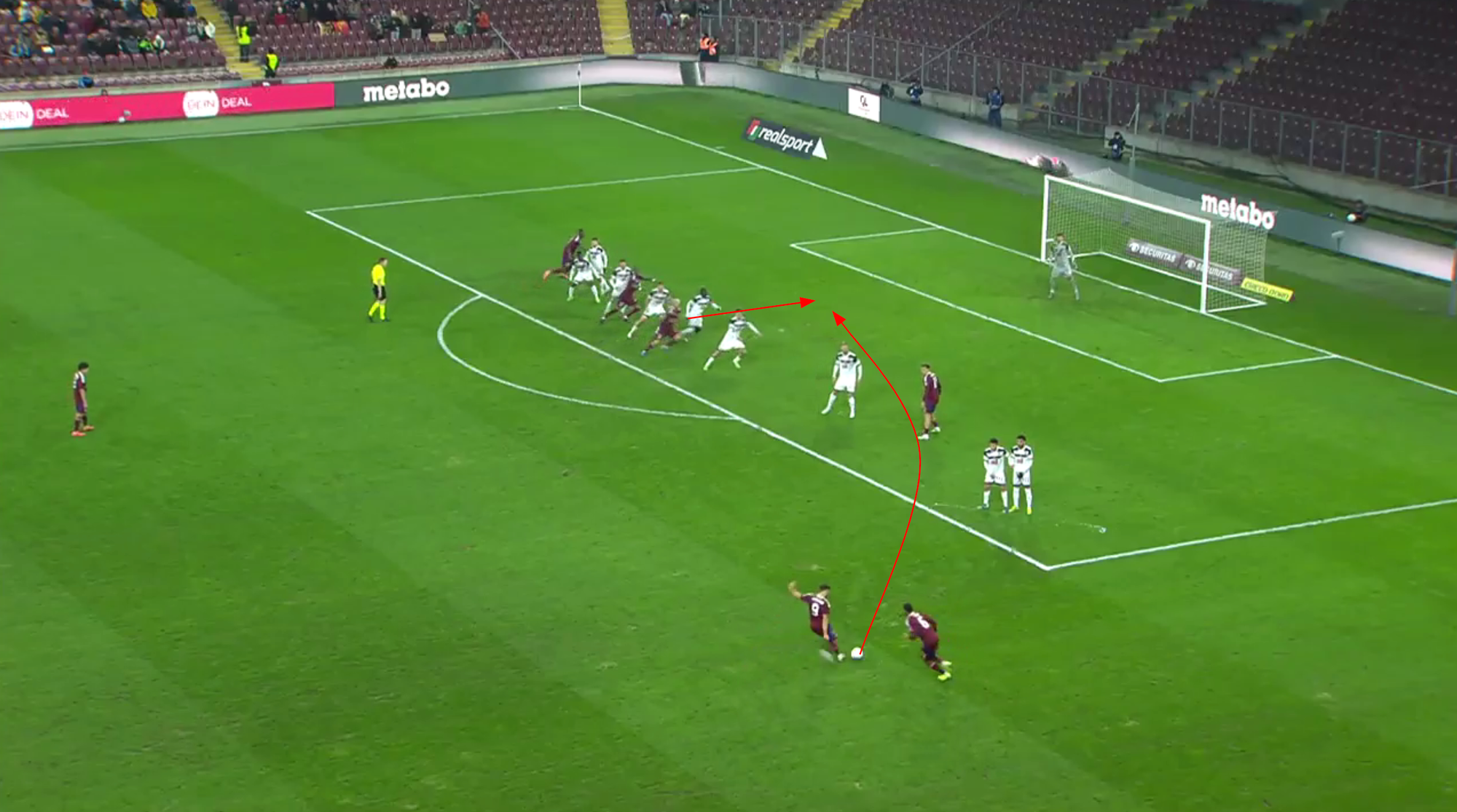
If that wasn't bad enough, perhaps this indirect free kick against Servette, which led to a goal, is even worse.
As the ball is about to be delivered, Lugano have a line of seven players across the edge of their box, with only two opposing players making a run in between them.
Somehow, the nearer player of the two finds a gap between the two Lugano players and gets on the end of the cross to send a bullet header into the bottom corner.
In all of these situations, Lugano had a clear numerical advantage in their own box yet conceded from them, which is inexcusable, especially as it's happened multiple times now.
FC Lugano Shots Against Map
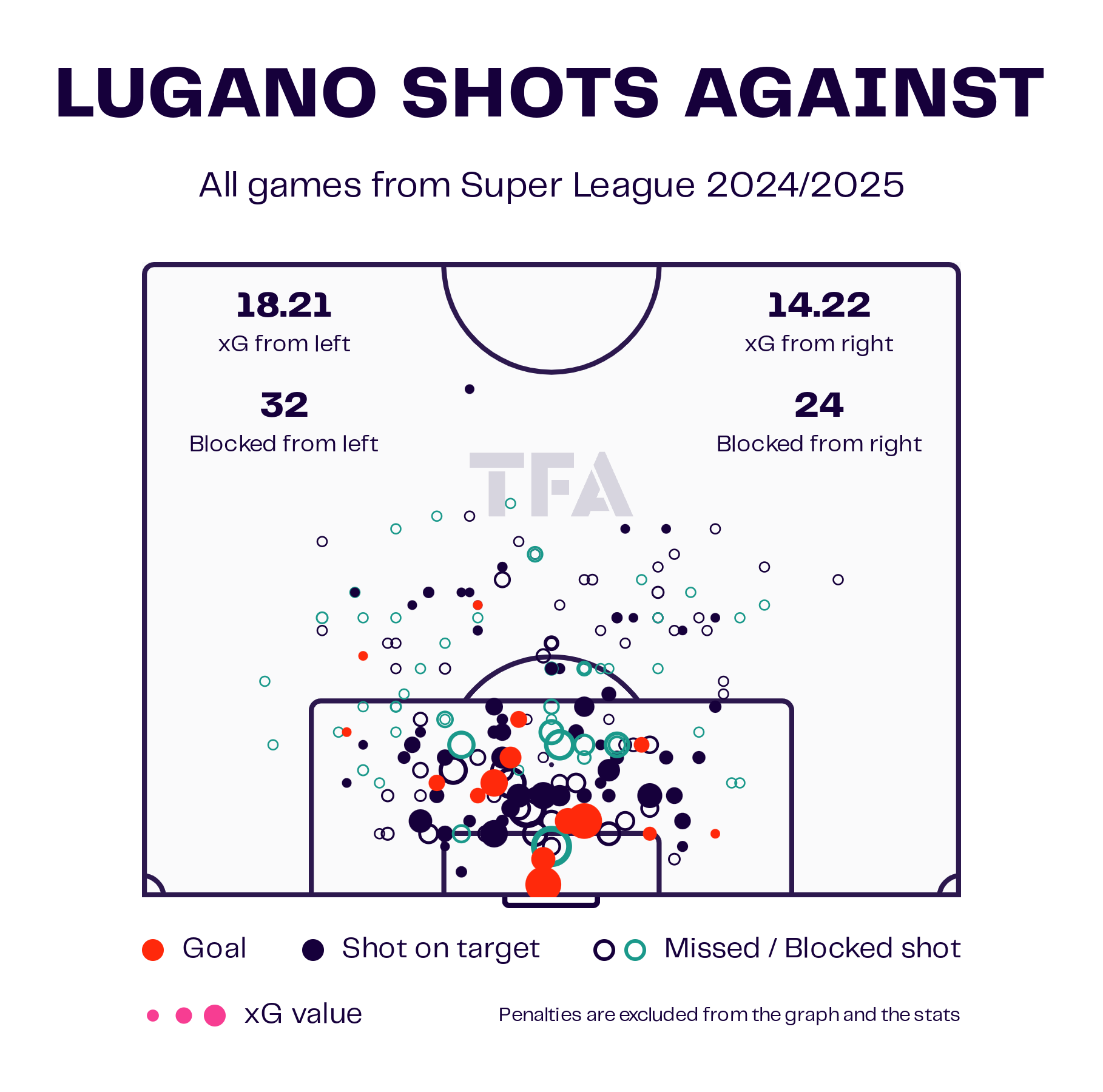
To further encapsulate the seriousness of their problems, we can see above, by their shots against the map, how many high-xG-value attempts and goals they are allowing in and around their own six-yard box.
They can forget about the title if they don't find a way to shore up in this area defensively and improve their concentration.
FC Lugano Defensive Territory Map
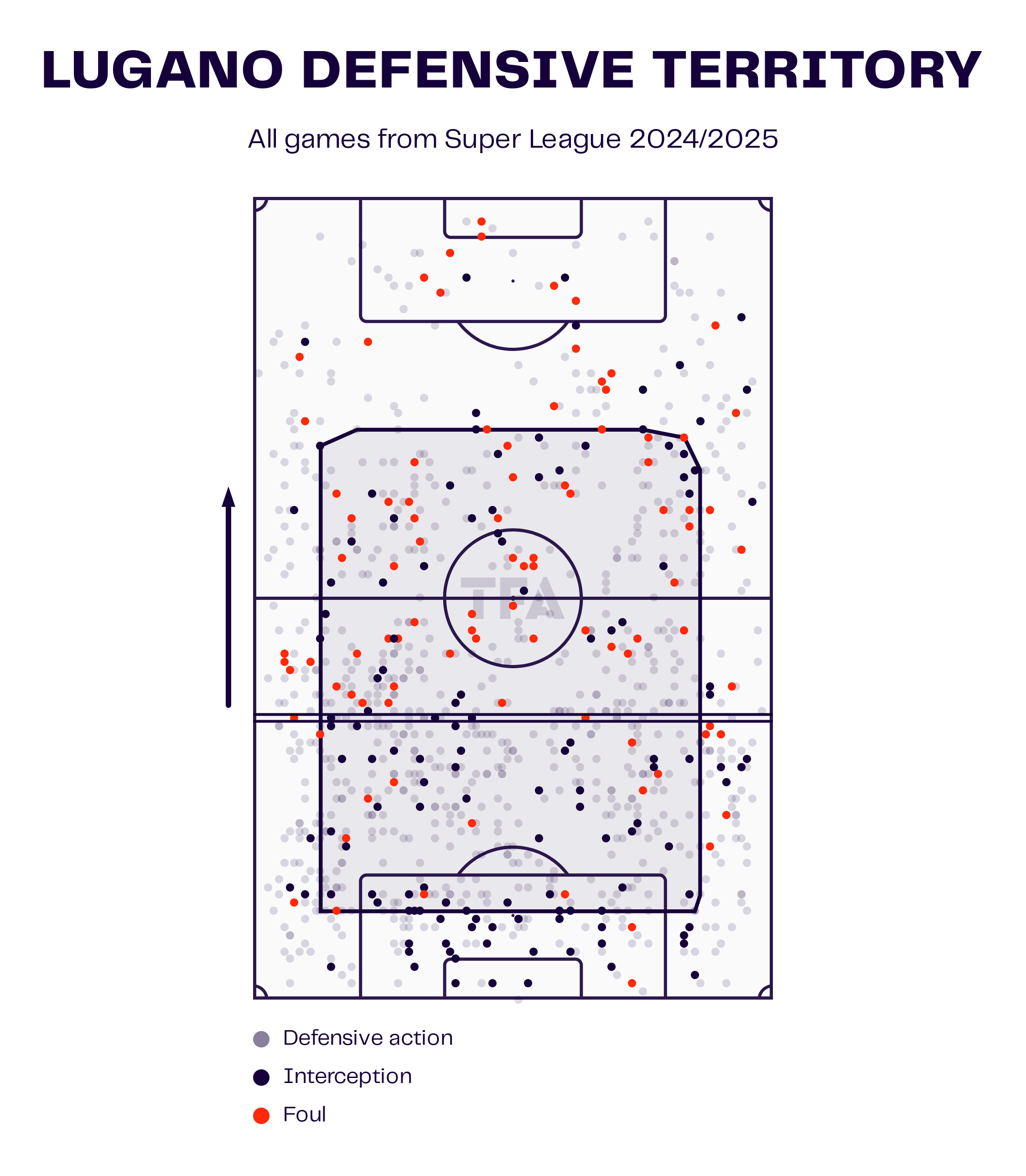
One last potential issue that could hurt them is their disciplinary record, as Lugano is currently ninth in the Swiss Super League Fair Play rankings, which makes them the fourth worst in the division when it comes to bookings.
They won the Fair Play award just three seasons ago, and this is due to their counter-pressing approach, which we can note by the number of fouls higher up the field in their defensive territory map above.
But while this could raise some problems for them as they've already picked up over fifty bookings in half a season, which is far too many, improving their actual defence is arguably more important to clean up.
Conclusion
Lugano have enjoyed a lot of success this season across three different competitions and find themselves well placed on all fronts as the second half of the season is set to begin.
Having finished one place higher in each of the last three seasons, the club's next step is to become Switzerland's champions for the first time in nearly eight decades.
While there are encouraging signs, particularly on the offensive end, they need to work on their defensive skills and disciplinary record to achieve this dream.
Whether they'll be able to do so remains to be seen, but the dream will live on nonetheless going into the spring for this modest club.

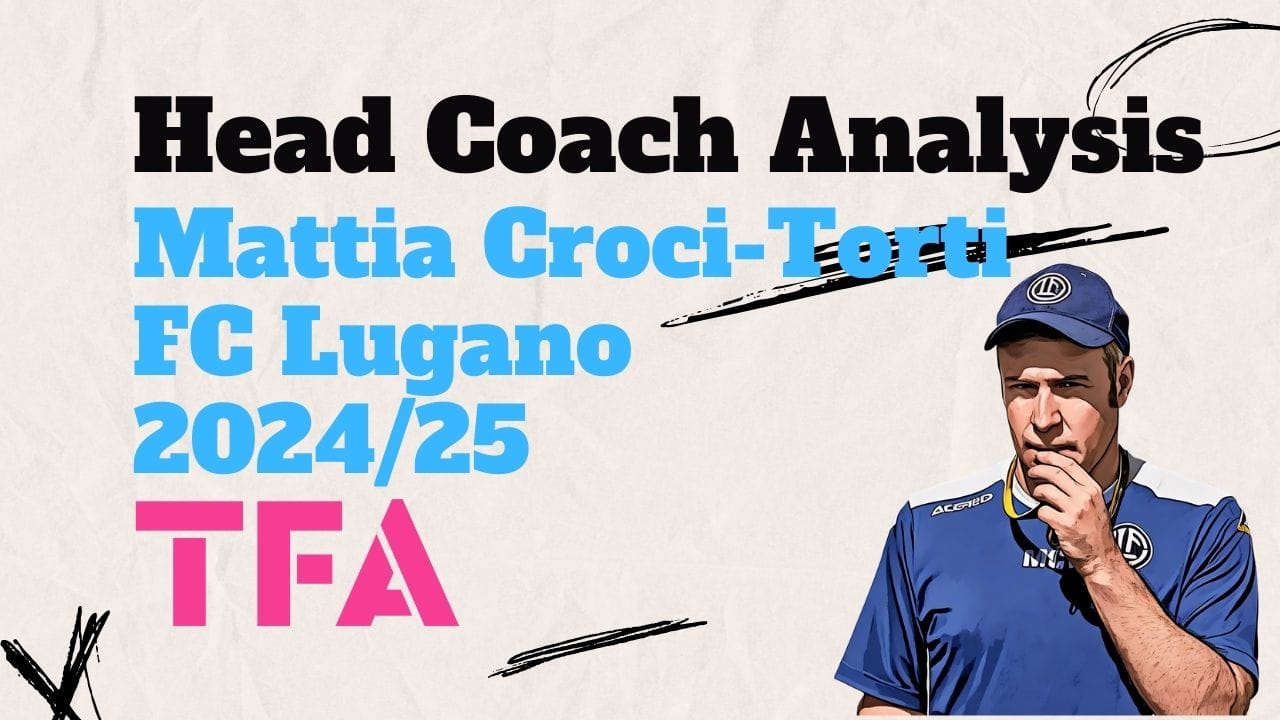


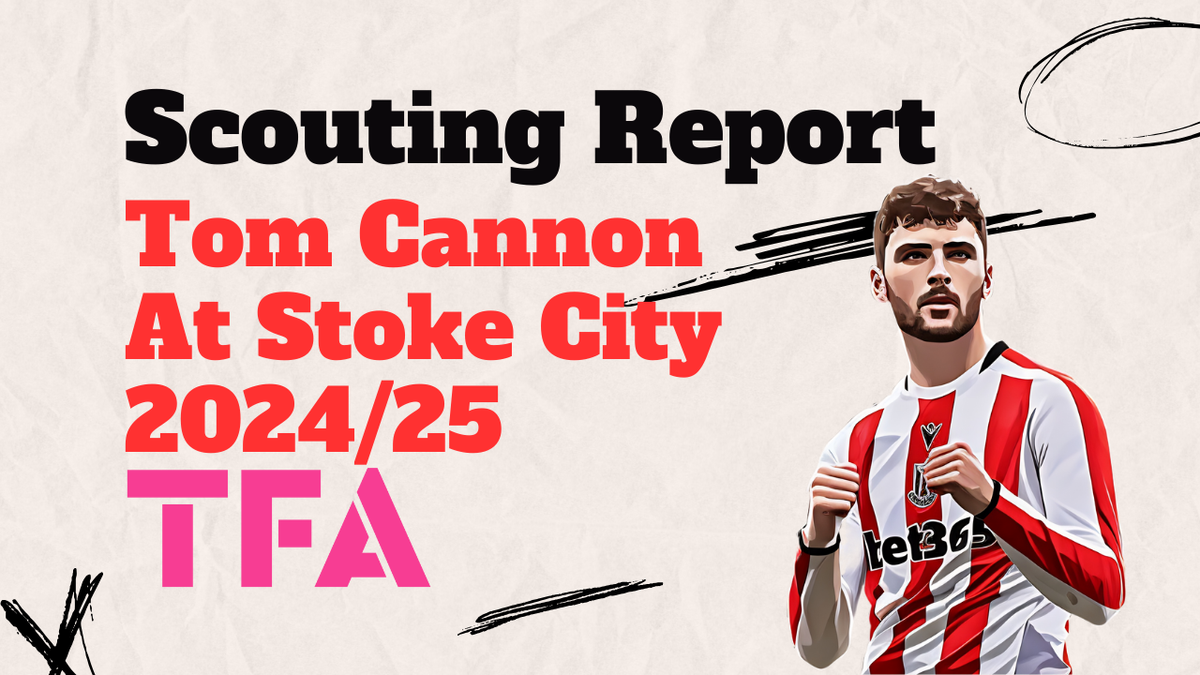

Comments